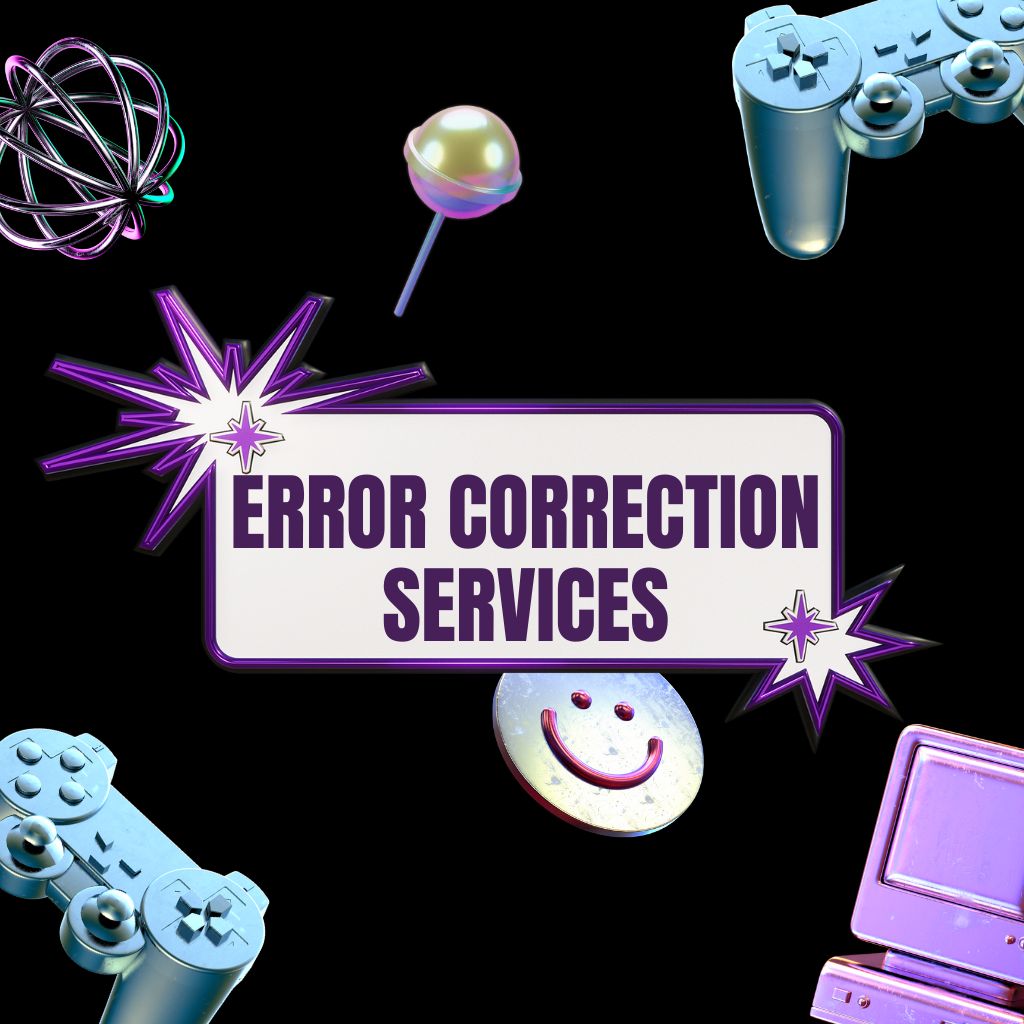
Introduction: The Critical Role of Accuracy in Business
In today’s fast-paced, data-driven business world, accuracy is not just important—it is essential. Errors in data, documents, communications, or operational processes can lead to misinformed decisions, wasted resources, and compromised credibility.
Error Correction Services provide organizations with a systematic approach to identify, rectify, and prevent errors, ensuring that information and processes are reliable, precise, and actionable. By investing in these services, businesses can boost efficiency, reduce operational risks, and build trust with clients, partners, and stakeholders.
This article explores the importance, methodologies, benefits, and best practices of error correction services, highlighting how meticulous accuracy contributes to business excellence and competitive advantage.
1. What Are Error Correction Services?
Error Correction Services encompass professional solutions for identifying, analyzing, and correcting mistakes in business data, documents, communications, and processes. These errors can occur in multiple areas, including:
-
Data Entry: Typographical or factual mistakes in databases.
-
Financial Records: Accounting or billing discrepancies.
-
Marketing Content: Errors in campaigns, websites, or social media posts.
-
Customer Records: Inaccurate contact information or duplicated entries.
-
Operational Processes: Workflow mistakes affecting efficiency or quality.
By addressing these errors proactively, businesses maintain credibility, operational integrity, and regulatory compliance.
2. Why Error Correction is Essential
Errors, no matter how small, can have significant implications. Key reasons why error correction is critical include:
-
Enhancing Accuracy: Ensures reliable and precise data for decision-making.
-
Improving Customer Trust: Clients value businesses that maintain flawless communication and records.
-
Optimizing Efficiency: Reduces time and resources spent rectifying mistakes later.
-
Regulatory Compliance: Helps maintain adherence to legal and industry standards.
-
Preventing Financial Loss: Mitigates errors that could lead to incorrect billing, inventory issues, or reporting discrepancies.
3. Common Sources of Errors
Understanding where errors originate is essential for effective correction:
-
Manual Data Entry Mistakes: Typos, omissions, or misformatted entries.
-
System Integration Issues: Errors arising from merging multiple software systems.
-
Human Oversight: Missed details, miscommunication, or lack of verification.
-
Automated Process Failures: Errors in scripts, macros, or automated workflows.
-
External Data Sources: Inaccuracies from vendors, clients, or external databases.
4. Methods of Error Correction
Professional error correction involves multiple strategies depending on the type of error:
a) Manual Review and Verification
Careful review of documents, data, or processes to identify inaccuracies. Best suited for small datasets or specialized content.
b) Automated Error Detection Tools
Software that scans for inconsistencies, duplicates, or anomalies in large datasets or documents. Examples include Excel error-checking, Grammarly for content, and financial reconciliation tools.
c) AI-Powered Correction Systems
Artificial intelligence algorithms can detect subtle discrepancies, predict errors, and suggest corrections with high accuracy.
d) Standardized Protocols and Templates
Use of predefined formats, workflows, and validation rules to minimize errors at the entry point.
e) Continuous Monitoring and Auditing
Regular audits and monitoring processes ensure early detection and timely correction of errors.
5. Benefits of Professional Error Correction Services
Investing in error correction services offers a range of benefits:
-
Data Accuracy: Reliable data enhances decision-making, reporting, and analysis.
-
Operational Efficiency: Reduces time spent identifying and fixing mistakes manually.
-
Customer Satisfaction: Accurate communication and records build trust and loyalty.
-
Financial Integrity: Minimizes errors in billing, accounting, and financial reporting.
-
Compliance and Risk Mitigation: Ensures adherence to regulatory standards and prevents penalties.
-
Enhanced Brand Reputation: Flawless operations reflect professionalism and credibility.
6. Best Practices for Effective Error Correction
Implementing best practices ensures maximum efficiency and minimal mistakes:
a) Implement Validation Rules
Set clear rules for data entry, document creation, and workflow processes.
b) Train Staff
Educate employees on common error sources and techniques for error prevention.
c) Leverage Technology
Use automated tools, AI, and software integrations to detect and correct errors efficiently.
d) Maintain Documentation
Keep records of corrections for accountability, auditing, and continuous improvement.
e) Conduct Regular Audits
Periodic checks of processes, data, and content reduce cumulative errors.
f) Encourage Accountability
Assign responsibility for verification and corrections to designated teams or personnel.
g) Continuously Improve Processes
Analyze error trends to refine workflows, templates, and data handling practices.
7. Tools and Technologies for Error Correction
Modern businesses use specialized tools to streamline error correction:
-
Data Cleaning Tools: OpenRefine, Trifacta, Insycle
-
Content Correction Tools: Grammarly, Hemingway, Microsoft Editor
-
CRM and ERP Validation: Salesforce, Zoho, SAP for data integrity checks
-
Financial Reconciliation Tools: QuickBooks, Xero, Sage for accounting errors
-
AI-Powered Analytics: Identify inconsistencies and predictive error detection
These tools save time, reduce manual effort, and ensure consistent accuracy.
8. Challenges in Error Correction and How to Overcome Them
Even with professional services, error correction can face obstacles:
-
High Volume of Data: Use automation and AI to handle large datasets efficiently.
-
Complex or Unstructured Data: Apply advanced analytics and machine learning algorithms.
-
Recurring Human Errors: Implement standardized processes and training.
-
Integration Challenges: Ensure error correction protocols are included in all system integrations.
-
Continuous Monitoring: Establish ongoing review processes to prevent new errors from accumulating.
Proactively addressing these challenges ensures accuracy, reliability, and operational excellence.
9. Impact on Business Growth
Accurate data and error-free operations have a direct impact on business success:
-
Enhanced Decision-Making: Reliable data supports strategic planning and innovation.
-
Operational Efficiency: Reduces redundancies and maximizes productivity.
-
Customer Confidence: Trustworthy communication and records strengthen client relationships.
-
Cost Reduction: Avoids financial losses caused by errors in billing, inventory, or reporting.
-
Competitive Advantage: Businesses known for accuracy and reliability outperform competitors.
10. Final Thoughts
Error Correction Services are essential for businesses striving for excellence, accuracy, and operational efficiency. Clean, error-free data and documents enable smarter decisions, enhance customer trust, and reduce operational risks.
By combining structured processes, advanced technology, staff training, and continuous monitoring, organizations can ensure that errors are minimized, corrected swiftly, and prevented from recurring.
Read more > https://datahome.solutions/error-correction-services-ensuring-accuracy-and-elevating-business-reliability/
#ErrorCorrection #DataAccuracy #OperationalExcellence #BusinessEfficiency #CRMDataManagement #ContentCorrection #QualityAssurance

